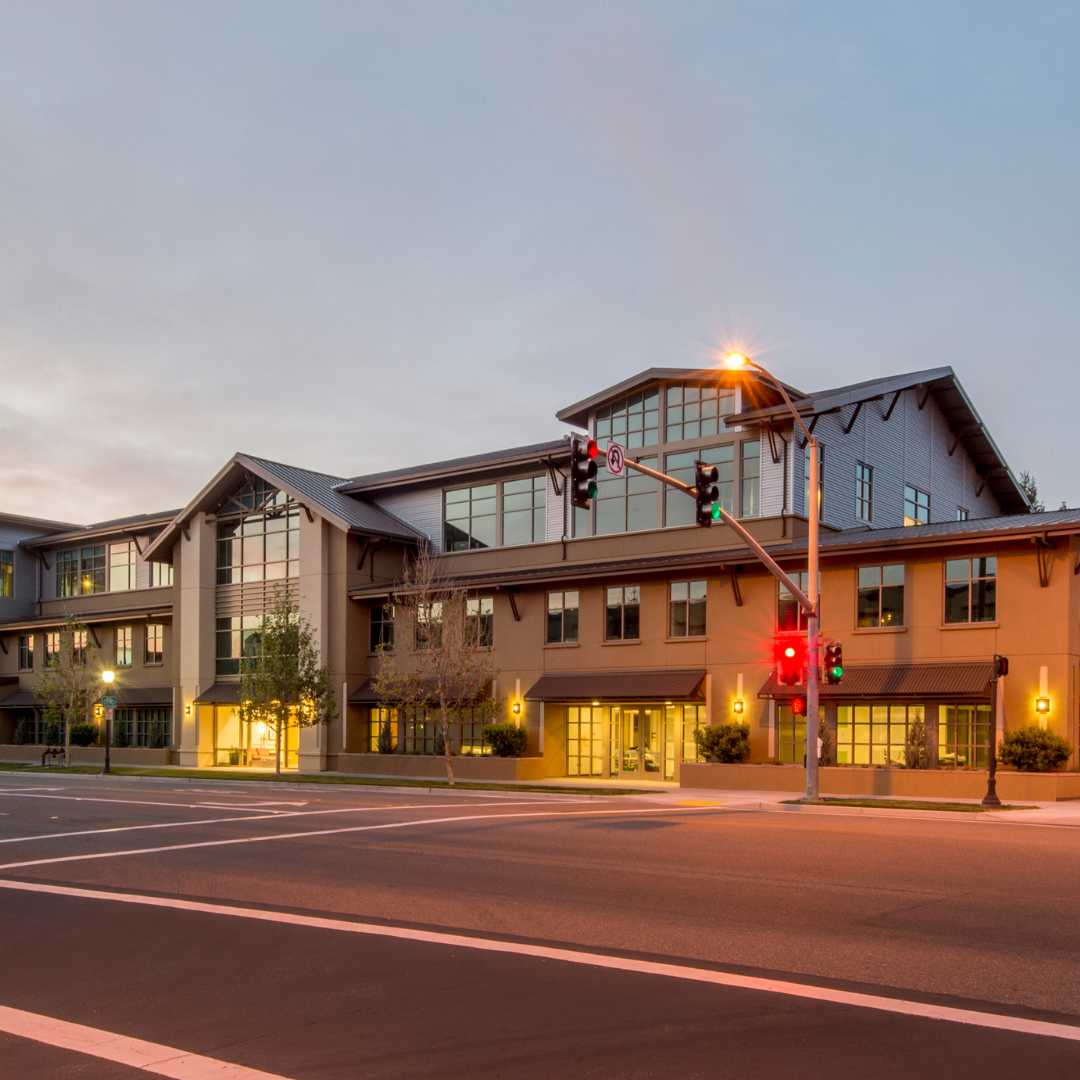SELF-BUILD MORTGAGES LONDON
PLANNING TO BUILD YOUR DREAM HOME STARTS WITH OBTAINING A SELF-BUILD MORTGAGE.
- Potentially no stamp duty* – saving you thousands of pounds.
- Duty only paid above land value threshold.
Self build homes are on the rise
Today, around one in three UK residents say they would like to create their own self build home, according to the National Custom and Self Build Association (NaCSBA).
Realising your dream home with a self build is increasingly popular.
Planning permission for self and custom build service plots increased by seven per cent in 2021 over the previous year, according to local authority data (Source: GOV-UK, May 2022).
Self build mortgages are designed to help with build costs for creating your dream home.
Did you know?
- 7- 10 per cent of homes in the UK are self build.
- 13,000 self build homes were built in 2021.
There are two ways you can get a self-build done.
(i) Be the complete self builder and save money, by carrying out most of the work yourself. You would need to pay for the services of a professional, skilled tradesman, such as an electrician or a plumber only where strictly necessary.
(ii) A popular option for self build projects is to only take control over managing the process itself. You then hire the services of a surveyor, architect and the required skilled tradesmen, and oversee the ongoing build. Or arrange for a contractor to manage the daily work schedules on your behalf.
The custom-build self-build property
A further type of self build is known as the ‘custom build’, often viewed as an even easier option.
This is because the property developer has previously purchased the plot of land. This means they are responsible for carrying out all necessary works including installing all utilities, such as electricity, gas, water mains and sewerage/waste disposal.
You simply purchase the plot of land, and collaborate in the design of your home, which is actually built on your behalf by the developer.
What exactly are self-build mortgages?
A self-build mortgage is:
- A type of mortgage finance given by a specialist, self build mortgage lender.
- A way to borrow money to fund the construction of a property you want to build yourself. Whether it’s your own home, another property or existing structure.
A self build mortgage is also known as a cost based mortgage. It has all-important differences from many bank and building society mortgages or other conventional, standard mortgages:
- You receive the loan in a series of payments instead of one big lump sum against the purchase price.
- Each payment is made at a preset stage as the build progresses.
What preset stages will release funds in a self-build mortgage?
Payment stages of a typical self-build structure:
- Purchase of land/plot: may require outline planning permission or full planning permission.
- Attention to substructure: part of the building beneath ground surface.
- Installing wall-plate: a load-bearing structural member above internal leaf of an external cavity wall/eaves height, immediately before install of roof trusses.
- Installing roof tiles
- First fix: includes all structural work, e.g. roof struts, wall studding, framing and joists.
- Second fix: all work after the plastering completed, such as electric fixtures, cables and wires, water pipes connected, and doors fitted into frames.
- Certified completion: proof of safety inspection of completed self build by building control. Document usually issued by the building regulation department of your council or local authority. An inspection of the site is carried out before work starts, during the build and upon project completion.
Payment stages for an existing home
Funding of a self build involving a property conversion or renovation of an existing home or similar existing property are slightly different. In addition to the first and second fix, works will also include:
Purchase of an existing structure, i.e. home or similar residential property.
Completion of a detailed structural survey – supplied with projected costs of structural modifications needed.
Completion of installed structural, load bearing elements, e.g. beams, columns, walls, slabs, trusses, etc.
Payment stages for a 'custom build' project
Near identical stages to a more typical self build mortgage or renovation project but with related extra costs.
It should be noted that different self build mortgage lenders can release funds at a different types of preset stage. In some cases a lender may, instead, release monies up to a percentage of the increased value of the property as construction continues.
There are also two types of self-build mortgages
Type One - Arrears stage payments
Payments on self build mortgages are received after each preset stage of the self build is completed.
Reason: A key aim is to (i) reduce the mortgage lender’s risk and (ii) ensure that funds are spent according to project costs and lender’s criteria.
Who typically uses this mortgage type: Self builders with cash readily available to pay ongoing build costs. Project is prevented from stalling before completion due to a sudden lack of funds.
Type Two - Advance stage Payments
Mortgage money is released before each build stage begins.
Reason: Funds released are immediately available at the point when payments for labour and materials are due.
Who would benefit from this mortgage type: Self builders who are unable to finance the entire self build from their own savings. It also removes the need for short term borrowing to help fill the funding gap.
Applying for a new property, self-build mortgage - what do I need?
Different lenders can have different requirements. But self build mortgage lenders will typically ask for more extensive plans and additional supporting documentation, compared to a standard mortgage application.
The requirements for a self build mortgage application usually include:
1. Typical deposit of between 15 – 50 per cent of total value of the construction.
2. Planning consent / detailed planning permission and and purchase.
3. Property construction drawings and specifications, including size, scale, construction methods and Building Regulations approval.
4. Land plot cost, total cost and estimated build cost at every stage of construction.
5. Documented proof of site insurance and self build ‘structural’ warranty, usually for a period of at least 10 years after completion. Taking out a self build warranty is mandatory with many self build lenders. It’s an insurance against structural problems, such as cracks in the walls or roof issues emerging up to ten years later. You may not be able to sell your property without the warranty.
6. Details of your architect’s professional indemnity cover and architect’s certificate – an alternative to a self build warranty – which expires after 6 years. The architect or surveyor issues a certificate stating that your property has been built according to planned specifications and complies with building regulations.
7. Site Insurance to indemnify against potential risk, such as theft and damage, and injury to personnel.
Basic information your lender needs to know
Always include the following key items:
- Location of your proposed self build property.
- Estimated time-line for completion – as self build lenders can impose a typical 2-year limit.
It’s most important to:
- Describe the type of property you are planning to build.
Use of non-standard construction materials or build methods may not be accepted by some self build mortgage lenders. Other providers are perfectly willing to lend self build mortgages for more unconventional building types. All mortgage lenders expect to see the inclusion of the most basic requirements. Mortgage lending to self builders is no different, and providers will carry out a thorough check of your credit history. Ensure to include:
- Employment details
- Income
- Expenses
- Current and previous debts
Your deposit for a self-build mortgage
The deposit amount you need can vary between different self build mortgage lenders.
A number of providers ask for a 15 per cent deposit on a new-build house and 25 per cent deposit for a new-build flat.
However, many providers would generally require a minimum deposit of between 25 and 50 per cent of the total project value.

Lenders payment rates for self-build mortgages
Most self build mortgage lenders base their calculations on the value of the land purchase or existing property.
A RICS valuer is appointed to carry out an initial valuation to establish a current value – and expected completion value. At this first stage you will be required to pay the valuation fees. Further inspections and valuations will also be carried out during the ongoing build.
The lender can respond to the valuation reports by increasing project value before issuing interim staged payments and a final release of funds.
Money is released as a percentage of project costs at each stage. Amounts are usually between 50 to 85 per cent.
However, typical values can be:
- 75-80 per cent of buying price or valuation – whichever is the lower amount. Individual self build lenders may be willing to provide up to 85 per cent – or as much as 95 per cent of the land and property value. This will depend on the property, project and mortgage market conditions.
- Up to 80 per cent of build costs.
- Up to 75 per cent of the increase in value at the preset stages during the build.
Your repayment interest rates on a self-build mortgage
It’s important to know that repayment interest rates on a self build mortgage can be higher than a standard residential mortgage.
Normally, you could expect to pay between 4 and 6 per cent.
The amount you will repay each month on a self build mortgage can also vary between each self build lender.
A number of lenders may consider your eligibility to move to an often lower interest rate residential mortgage upon completion of your self build home.
Bridging Loan Vs Self-Build Mortgage
Taking out a bridging loan or releasing equity on your current home or main property is sometimes suggested for funding a self-build mortgage. The plan is often to pay off the loan by selling the existing house once the self build property is complete. When compared to a standard residential mortgage, a bridging loan can often be a more costly way to finance your self build project. Monthly interest rates are usually between 0.5 and 1.5 per cent per month plus high arrangement fees of 1 – 2 per cent of total loan amount and possible time constraints on the term of lending.
What is the 'Help To Build' Scheme?
It's important to note:
The Help To Build’ scheme does not provide self build mortgages. To use the scheme, you will still need to:
- Obtain a self build mortgage – and from a lender who must be registered with the ‘Help to Build’ scheme.
How does 'Help To Build' work?
- You only receive your equity loan and then start to pay the loan fees after your self build is completed.
- Only when the self build is completed will the government pay your self build mortgage lender the equity loan amount you were originally offered.
- Then your self build mortgage will automatically switch to a standard residential repayment mortgage.
How much will I receive from the scheme?
- Between 5 and 20 per cent of the total estimated cost.
- Up to 40 per cent of the total estimated cost.
Spending limits
Am I eligible to apply for the scheme?
To be able to apply for the scheme, there are four key requirements:
- You must be 18 years of age or above.
- Have a right to live in England.
- Will reside in the newly-built home as your only home.
- Obtain a self build mortgage from a lender registered with the ‘Help to Build’ scheme.
Please Note: Eligibility checks will be carried out, including your ability to afford the equity loan repayments.
Is there a time limit on the scheme?
How long will I have to build my home?

Our Autumn 2024 Budget Breakdown
Autumn Budget 2024: Key Tax Changes and Their Implications for the Real Estate

Navigating Commercial Investment Finance: A Comprehensive Guide to Buying Commercial Property in the UK
Investing in commercial property can be a rewarding venture, offering potential for substantial








